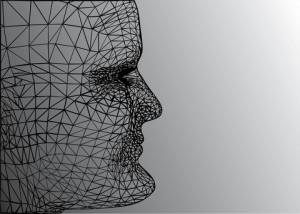When people ask, “What is a phobia?”, the simplest answer is that it’s a powerful fear response — but that doesn’t really do justice to what it feels like to live with one.
If you experience a phobia, you already know this isn’t “just being afraid.” It’s your body reacting as if danger is right in front of you, even when you know you’re safe. It can feel confusing, frustrating, even isolating. But here’s what’s important to remember:
A phobia is not something you have — it’s something your mind does.
And anything the mind can do, it can also learn to undo.
Phobias are behavioural and emotional patterns — automatic reactions that were once protective but have become misdirected. And because they are learned, they can also be changed.
Unpacking the Make-Up of a Phobia
Phobias are like emotional jigsaws — made up of thoughts, sensations, and memories that all connect to form one overwhelming reaction.
When we gently unpack each piece, we can begin to understand how the fear is built — and more importantly, how to unbuild it.
There’s the trigger (a spider, an enclosed space, a flight).
Then the thought (“I can’t cope,” “Something bad will happen”).
Then the body’s response — racing heart, trembling, panic.
It happens so fast it feels automatic. But that speed doesn’t mean it’s uncontrollable — it just means the pattern has been rehearsed many times. With compassion and guidance, you can teach your brain a new response.
The Many Faces of Phobia
After years of listening to people talk about their fears, one thing is clear: phobias can attach to almost anything.
From the well-known — spiders, flying, needles, or public speaking — to the more unusual — buttons, baked beans, balloons, or even tall buildings.
The variety is incredible, but the pattern underneath is the same.
Whether it’s fear of spiders or fear of storms, all phobias share one common truth:
The fear lives inside, not outside.
The spider, plane, or thunderstorm is not the source of your fear — it’s simply the trigger that sets off an inner alarm your mind has created.
Fear as an Inner Projection
You’ve probably heard that phobias are “irrational fears.” That phrase can sound dismissive, but what it really means is that the fear doesn’t come from the outside world — it comes from within our thoughts and imagination.
When your brain believes there’s danger, your body reacts instantly — as if it’s real.
That’s why someone can see a shadow and feel terror before realizing it’s just a coat on a chair.
It’s the same mechanism that causes a man to panic when he mistakes a rope for a snake, or a woman to flinch at the sound of a buzzing light, convinced it’s a wasp. Once they realize there’s no real threat, the panic melts away in seconds.
Their bodies were never responding to the rope or the buzzing sound — they were responding to the idea of what those things meant.
That’s how phobias work: the mind projects an internal fear onto the world outside.
How the Mind Shapes Our Reality
Our brains are incredibly creative. They don’t just process the world — they paint it.
Each of us sees life through a lens made of our past experiences, emotions, and beliefs.
Two people can look at the same painting in a gallery and have completely opposite reactions — one sees beauty, the other confusion. The artwork doesn’t change; the meaning we assign to it does.
Phobias work in a similar way. The external trigger (a plane, a dog, an elevator) doesn’t carry fear on its own — the fear is created by the meaning our brain attaches to it.
That’s why when we gently change the meaning, the fear begins to fade.
A Gentle Question
If you were 100% certain — completely guaranteed — that you wouldn’t feel panic, dread, or discomfort the next time you faced your fear… could you handle the situation?
Almost everyone says yes.
That shows something powerful: the problem isn’t the object or situation itself — it’s the internal response your brain has learned to create. Once that response changes, the trigger loses its power.
When you calm the inner world, the outer world becomes safe again.
Changing the Inner Response
The amazing thing about the human brain is that it can change — even deeply rooted patterns like phobias.
With the right approach — often a combination of Cognitive Behavioural Therapy (CBT), Exposure Therapy, and gentle self-practice — your mind can relearn safety. Step by step, it can learn to respond with calm instead of panic.
This isn’t about “fighting” fear — it’s about understanding it.
And understanding brings choice.
A Note from Us to You
If you’ve lived with a phobia, you already know how exhausting it can be to carry a fear that others don’t seem to understand.
You may have tried to “just get over it,” or felt ashamed of your reactions. Please know this: there’s nothing wrong with you.
Your brain did exactly what it was designed to do — protect you.
It just learned the wrong pattern, and now it needs gentle help to rewrite it.
That’s what we’re here for — to help you unpack your fear, piece by piece, until what once felt terrifying becomes manageable… and one day, maybe even neutral.
Conclusion
Phobias are not signs of weakness. They are signs of how powerfully adaptive the human mind can be — how vividly it can imagine, how fiercely it can protect.
Once you learn how to quiet that inner alarm, life begins to open up again.
Every phobia, no matter how old or unusual, can change when approached with understanding and care.
And that’s not just hope — it’s neuroscience.






